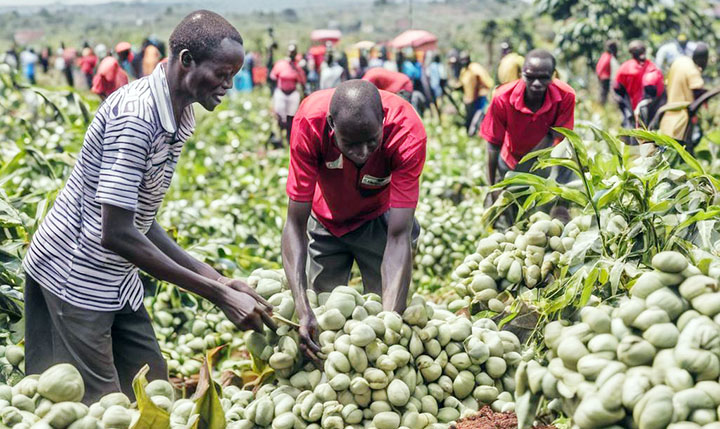KAMPALA: In his Budget Speech for the Financial Year 2024/2025, themed “Full Monetisation of Uganda’s Economy through Commercial Agriculture, Industrialization, Expanding and Broadening Services, Digital Transformation, and Market Access,” Finance Minister Matia Kasaija highlighted Uganda’s robust economic recovery. He noted that Uganda’s economy has bounced back from several internal and external shocks over the past four years, with GDP projected to grow by six percent in the financial year 2023/24, up from 5.3 percent in FY2022/23. This growth rate significantly surpasses the Sub-Saharan Africa average of 3.8 percent and the global average of 2.9 percent projected for 2024.
“Uganda’s economy has fully recovered from various internal and external shocks,” Kasaija said. “The size of the economy is now estimated at Shs 202 trillion (USD 53.3 billion), up from Shs 184.3 trillion (USD 48.8 billion) in nominal terms. If Ugandans agreed to share this GDP equally, each citizen would enjoy a GDP per capita of USD 1,146 (UGX 4.3 million) compared to USD 1,081 registered last financial year.”
In simple terms, Uganda’s economy has grown significantly, and the total value of all goods and services produced in the country, known as the Gross Domestic Product (GDP), has increased. If this total economic output were evenly distributed among all Ugandans, each person would receive the equivalent of USD 1,146 (or about UGX 4.3 million). This measure, called GDP per capita, gives an average sense of the country’s economic productivity per person, indicating improved overall economic health and prosperity.
Kasaija attributed this impressive performance to higher growth across all sectors, with services, agriculture, and industry expected to grow at 6.6 percent, 5.1 percent, and 5.8 percent, respectively, in FY2023/24. “Growth in the services sector has been driven by strong recovery in retail and wholesale trade, tourism, and communication and real estate activities,” he explained. Industry growth was propelled by manufacturing, construction, and mining, while agriculture benefited from increased production of food and cash crops, as well as livestock, supported by the Parish Development Model (PDM) and favorable weather conditions.
Kasaija highlighted several factors supporting Uganda’s strong economic growth, including low inflation and a relatively stable exchange rate, increased investments in the oil and gas sector, higher external demand for Ugandan products, recovery in tourism, and peace and security. “Uganda has contained inflation, with an average rate of 3.2 percent in the twelve months to May 2024, one of the lowest in the region,” he said. “Annual headline inflation has reduced from 10.7 percent in October 2022 to 3.6 percent last month.”
The minister also noted improvements in interest rates, with commercial bank lending rates for shilling-denominated credit reducing to 17.7 percent in April 2024 from 19.3 percent in April 2023. “To further reduce lending rates, the government will continue to provide long-term affordable capital through various interventions, including capitalizing the Uganda Development Bank, the Parish Development Model, the Agricultural Credit Facility, and the Small Business Recovery Fund,” he stated.
Private sector credit increased by 5.2 percent, reaching Shs 21.54 trillion in April 2024, with a slight increase in credit to productive areas of the economy, particularly agriculture. Despite depreciation pressure on the Ugandan shilling, the exchange rate remained relatively stable, averaging Shs 3,771 against the US dollar between May 2023 and May 2024.
In summary, Uganda’s economic outlook is positive, with significant growth across various sectors, improved fiscal management, and continued investment in infrastructure and social programs. As Uganda prepares to graduate from the category of Least Developed Countries and anticipates future earnings from oil exports, the focus remains on sustaining this momentum and achieving socio-economic transformation. “When oil and gas start to flow in FY2025/26, with deliberate value addition to our raw materials and productive utilization of the PDM and other wealth creation initiatives, attainment of prosperity for all and socio-economic transformation will be faster,” Kasaija concluded.

